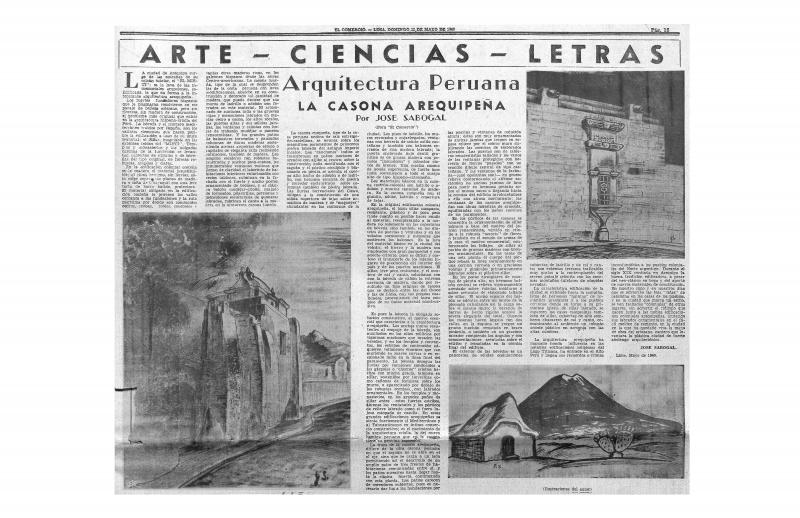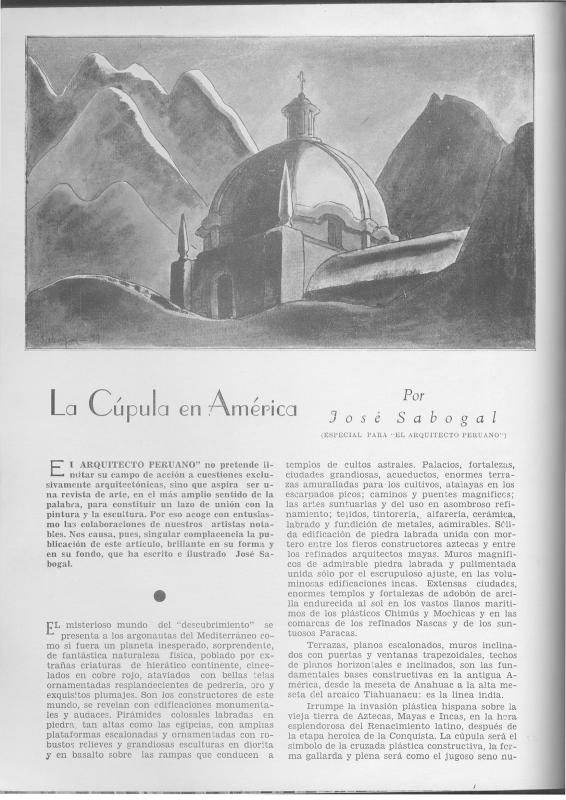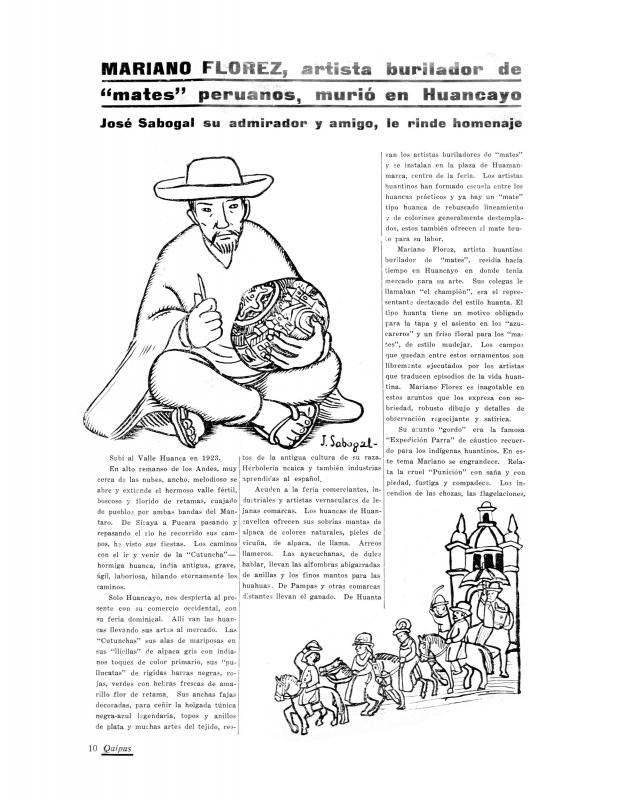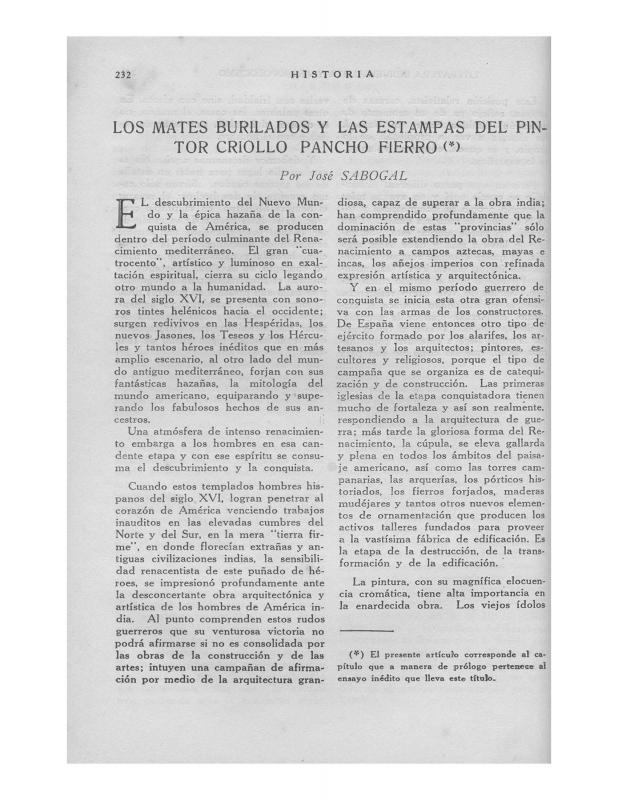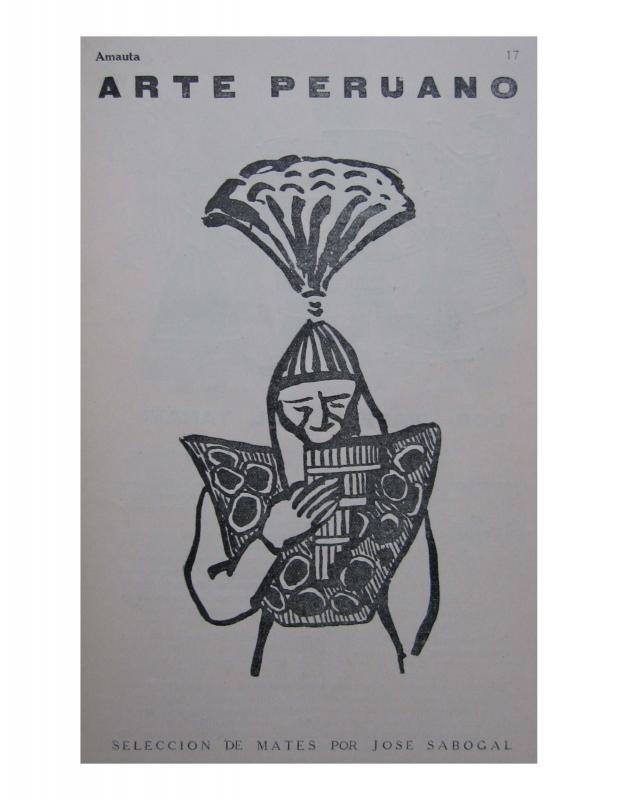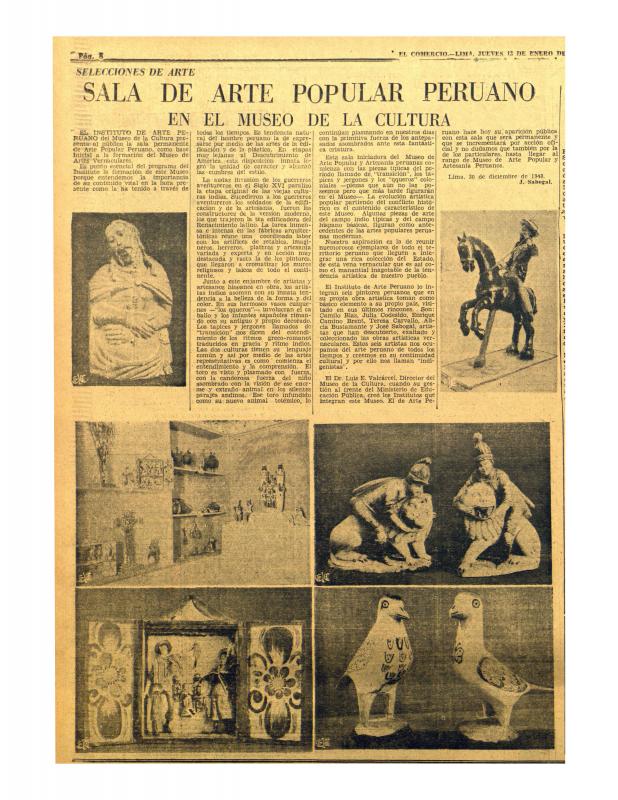The painter and art critic Antonino Espinosa Saldaña (1893–1969) reviews the exhibition of works by José Sabogal (1888–1956), the founder of Peruvian indigenist painting, at the Universidad Nacional Mayor de San Marcos (Lima, 1931). This article is of particular interest because the reviewer’s comments reveal the political tension he sees in some of the artist’s paintings. Indigenist painting flourished in Peru from the 1920s to the 1940s as part of a broader movement that sought to redefine Peruvian identity in terms of indigenous elements. Although at some points it was entirely focused on the “indigenous” story and the glorious Inca past that also championed a mestizo identity portrayed as a result of the integration of “native” and “Hispanic” cultures. The main ideologue and unchallenged leader of the Indigenist movement in the visual arts was José Sabogal (1888–1956), whose profound interpretation of the concept of “being rooted” was deeply influenced by regional art movements in Spain (exemplified by Ignacio Zuloaga [1870–1945], among others) and in Argentina (Jorge Bermúdez [1883–1926], to mention just one); Sabogal spent a great deal of time in these countries during his formative years. When he returned to Peru in late 1918, he settled in Cuzco where he produced about forty oil paintings of people and scenes of the city; these works were subsequently shown in Lima (1919) at an exhibition that is considered the formal beginning of Indigenist painting in Peru. Sabogal’s second solo exhibition at the Casino Español (1921), established his reputation. He joined the faculty at the new Escuela Nacional de Bellas Artes in 1920, where he was eventually appointed director (1932–43). There he trained a group of painters who joined the Indigenist movement: Julia Codesido, Alicia Bustamante (1905–1968), Teresa Carvallo (1895–1988), Enrique Camino Brent (1909–1960), and Camilo Blas (1903–1985). In 1931, Sabogal exhibited twenty paintings at the Salón de Grados at the Facultad de Ciencias Económicas (the former location of the Universidad Nacional Mayor de San Marcos). He had produced these paintings during the 1920s, and many of them were shown at his great exhibition in Buenos Aires in 1928, including several emblematic Indigenist canvases, such as: El Varayoc de Chinchero, La procesión del Taytacha Temblores, and El gamonal. In the mid-1930s, a powerful movement emerged to oppose the Indigenist style—which was perceived as official and exclusive—and eventually, in 1943, Sabogal was dismissed from the Escuela Nacional de Bellas Artes. Supporters of Indigenism viewed this move as unjust, and rallied to the painter’s defense in letters, newspaper articles, and social events. [There are many articles about this artist in the ICAA digital archive, including the following written by Sabogal: “Arquitectura peruana: la casona arequipeña (doc. no. 1173340); “La cúpula en América” (doc. no. 1125912); “Mariano Florez, artista burilador de "mates" peruanos, murió en Huancayo: José Sabogal su admirador y amigo, le rinde homenaje” (doc. no. 1136695); “Los mates burilados y las estampas del pintor criollo Pancho Fierro” (doc. no. 1173400); “Los 'mates' y el yaraví” (doc. no. 1126008); “La pintura mexicana moderna” (doc. no. 1051636); and “Sala de arte popular peruano en el Museo de la Cultura : selecciones de arte” (doc. no. 1173418)].

